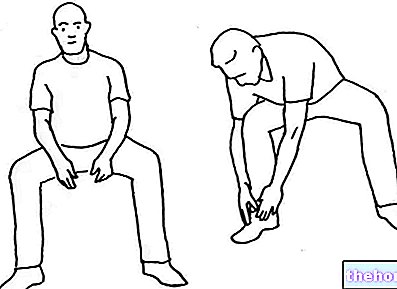Edited by Dr. Stefano Casali
Hypoglycemia
Hypoglycemia is one of the less frequent causes of collapse as a consequence of sporting activity and occurs when the liver's production of glucose decreases after glycogen stores are depleted. This is a typical situation in endurance competitions that last more than four hours.

Hypothermia
Hypothermia can be an unusual cause of collapse in athletes and occurs when the athlete remains too long in a cold environment and fails to produce enough body heat, necessary to compensate for the loss due to the surrounding environment. frequent are detected when the swimming part of the triathlon takes place in cold water, when endurance competitions are held in cold and rainy periods or in all winter sports such as cross-country skiing. The severity of hypothermia is estimated with the rectal temperature . A mild hypothermia occurs in temperatures ranging from 32 ° C to 35 ° C and is accompanied by mental confusion and intense tremors. The treatment is based on protecting the athlete from atmospheric events by replacing wet clothes and passively warming the body with a blanket and a cup of hot drink. When the temperature drops below 32 ° C, the tremor (which generates heat) interrupts; if this occurs it is necessary to take the athlete immediately to the hospital where more effective warming measures will be adopted such as the administration of warm liquid intravenously, warm oxygen and peritoneal dialysis with warm liquids. In even more serious cases, that is with temperatures below 30 ° C, the athlete may seem apparently dead, only to recover after the warm-up phase.
Conclusions
Collapse associated with sports activity is a fairly common occurrence in endurance sports, especially those held in hot-humid environmental conditions. The cause is almost always benign in athletes who collapse after the end of the competition without loss of consciousness, with the normal vital values and a normal mental state. This is complicated if the collapse occurs during the competition, if the athlete has fluctuating general conditions and an altered level of consciousness. The appropriate and timely diagnosis becomes necessary in order to start the most suitable treatment. Most cases find relief with rest and fluid intake. On the other hand, the more serious causes of collapse, such as those associated with hyponatremia and heat stroke, can cause serious damage and even death if not treated promptly and in the best possible way. It is essential that those who they provide care during endurance competitions are familiar with the athletes and know how to take care of the patient to prevent fatal consequences.
An appropriate and timely diagnosis is essential to be able to provide the necessary treatment. It is important that medical personnel are able to obtain laboratory results relating to blood glucose and serum sodium concentrations as quickly as possible. Based on serum sodium levels, the seriousness of the situation is understood.
Other articles on "Hypoglycemia and Hypothermia in the" Athlete "
- Hyponatremia
- Syncope
- Vasovagal syncope, neuromediate syncope, post-exercise syncope
- Collapse and Sport
- Collapse and training
- Muscle cramps and dehydration
- Collapse and sport: how to intervene
- Sudden Sports Death
- Sudden Sports Death: causes and prevention




























